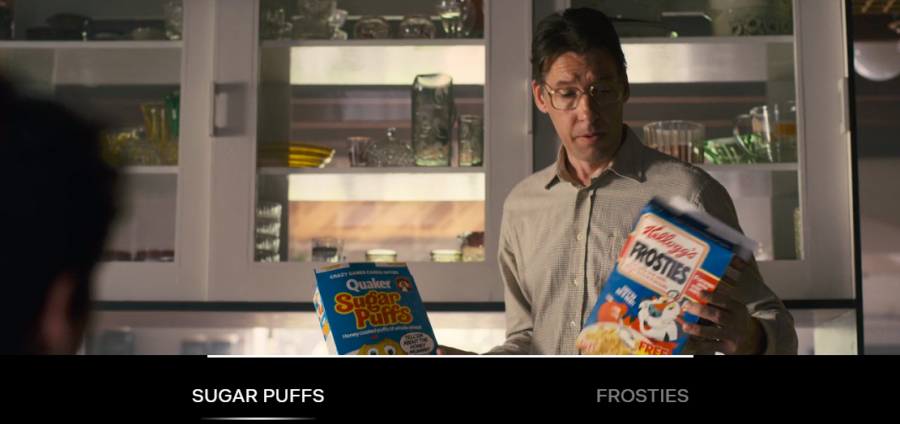Review or re-view? ‘Bandersnatch’ lets you pick the thrills
February 22, 2019
In December, Netflix released “Bandersnatch,” an innovative interactive installment in the dystopian “Black Mirror” franchise famed for exploring various aspects of people’s often dark relationship with technology. While “Bandersnatch” has a unique choose-your-own-adventure hook that engages the viewer, it falls short of its full potential.
The story revolves around Stefan Butler, a young game developer who strives for a coveted five-star rating on his video game adaptation of an interactive adventure book, named Bandersnatch. Just like its namesake, the episode invites the Netflix viewer to interact with the story. You control Stefan’s actions by making a series of choices that increase in intensity, ranging from what to eat for breakfast to whether to commit murder.
The interactive element aligns you with Stefan; his success or failure becomes your own. This encourages repeated viewings, to find an ending where Stefan (and you) “win.”
“Bandersnatch” draws its power from the sensation of creating your own destiny amid a sea of possibilities. The episode can be viewed and re-viewed multiple times, and a viewer might never explore its full expanse. The mix of hard or final endings, as well as soft endings, referred to as checkpoints, creates a unique and personalised viewing experience.
Still, the diversity of outcomes ultimately works against the effectiveness “Bandersnatch” has as a work of drama. By granting the audience the ability to restart Stefan’s journey or go back to pivotal plot points and choose a different path, the episode creates an emotional barrier between the viewer and Stefan. At the beginning, you may feel guilty for making him suffer. But, as the plot progresses, you become desensitized to Stefan’s plight. In this manner, “Bandersnatch” feels more like a video game than a movie. While playing a game, you don’t get upset or mourn the loss of your avatar when they die; rather, you simply restart the level and begin again.
The acting and direction are well done. Reports indicated that filming for “Bandersnatch” took over a month (several times longer than a conventional feature) because each individual storyline was captured sequentially. This delivers a sense of fluidity to the acting and storytelling.
Even though it’s a standalone episode, “Bandersnatch” stays true to some of the core ideals that define the “Black Mirror” series: Stefan and other characters grapple with the concepts of control and destiny as seen through the lens of powerful technology. Are we really in charge of our actions? Does the government stalk and manipulate us? Ultimately, Stefan descends into madness when he realizes that control is an illusion.
Your first choice is whether to “play” Bandersnatch. Black Mirror fans and first-timers will not be disappointed. But they may have to watch more then once to find their happy ending.


